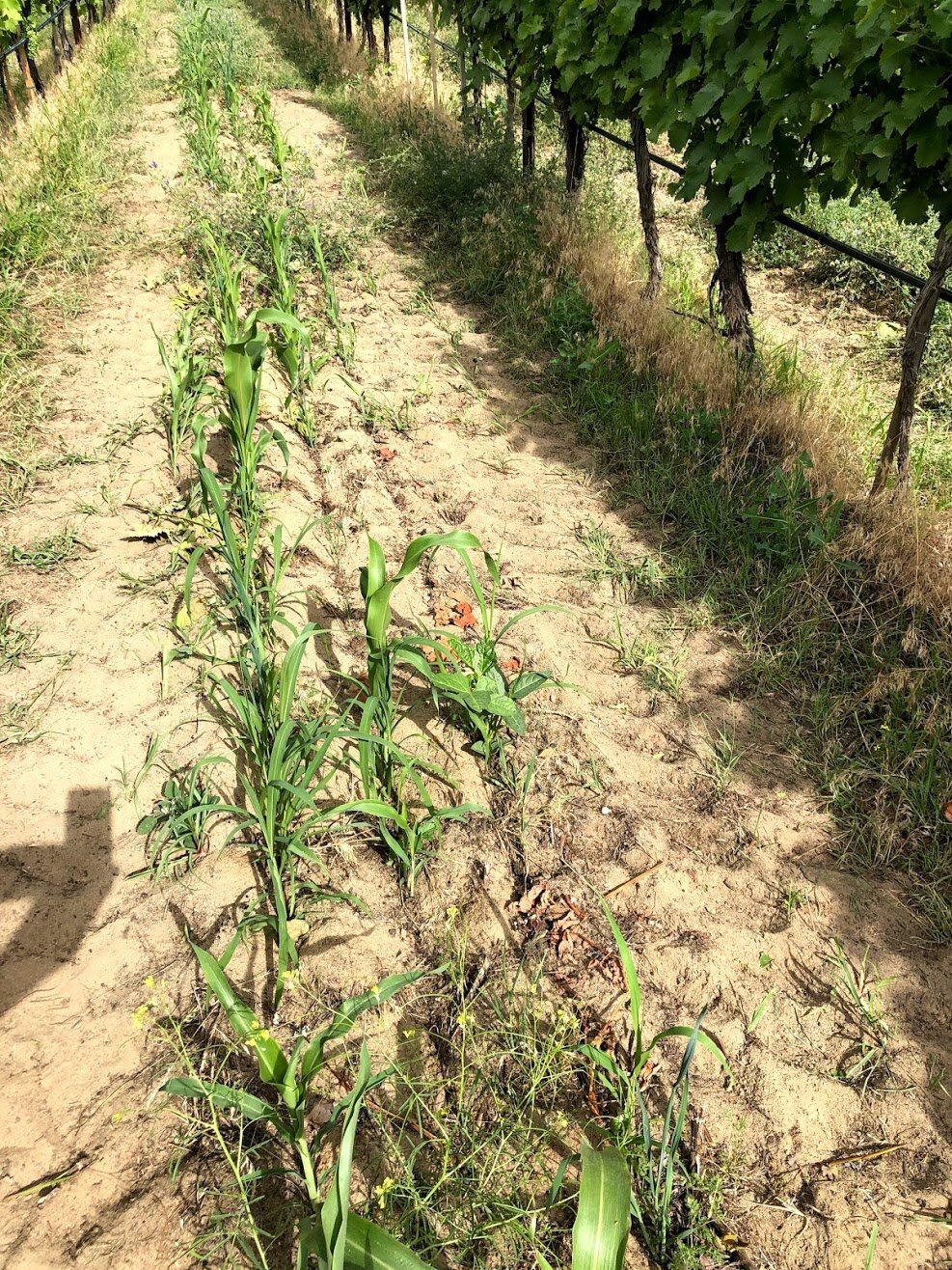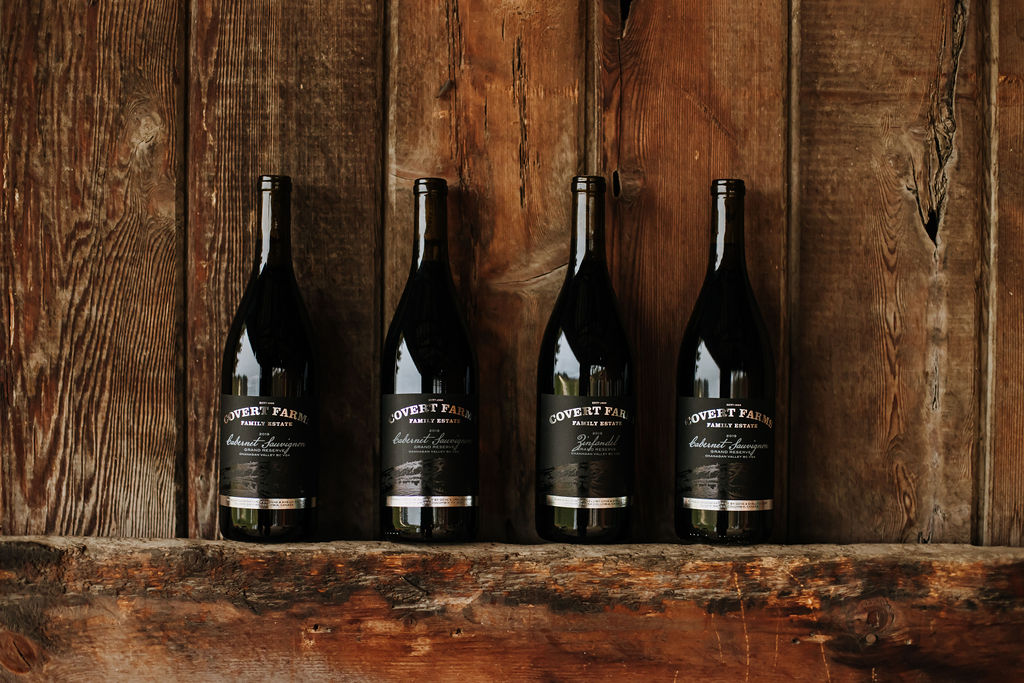COVERT FARMS 2019 HARVEST REPORT
“In many ways, soil degradation set the long-wavelenght pattern of history, as wars, natural disasters, and climate shifts pulled the trigger on environmental guns loaded by soil loss and degradation.”
― David R. Montgomery, Growing a Revolution: Bringing Our Soil Back to Life
Building upon our successes in 2018 with mixed cover crops and livestock integration and taking a deep dive into the world of Regenerative farming from the likes of Gabe Brown, Ray Archuleta, Allan Savory, John Kemph, David Montgomery and many others, we focused our efforts on applying the 5 principle of Regenerative agriculture to our vineyards and crop fields (1. minimal or no-tillage of the soil, 2. Amour (plant residue) left on the soil surface, 3. Living plant root at all times possible, 4. Diverse crop rotations and 5. Livestock integration.)
Why did we do this?
Regenerative agriculture offers many benefits to the farming ecosystem such as increasing soil organic matter, greater water holding capacity, improved nutrient cycling, pest and disease suppression through enhanced soil biology, and ultimately higher nutrient density in our target crops. A further intriguing idea is the possibility of Dry Farming our vineyards which would have multiple benefits such as enhanced resiliency to climate change and potential increase in wine quality attributes. By applying these principles we hope to be able to dry farm in five years.
How did we implement this?
One of the first steps was to track down a no-till seeder, which is unique from traditional seeders in that is a heavier design with sharp opening discs that can cut through plant residue on the soil surface to accurately place seed and properly pack it after without the need to till the soil prior to planting. We have been planting our lentil cover crop under the vines for years now, but in order to build organic matter in a meaningful way we need to grow a robust cover crop in the alley ways. Combined with a roller crimper (machine that flattens and crimps the stems of plants at the reproductive stage to terminate them) we were able to dry farm a reasonable covercrop in our alley ways.
To get the most from our cover crops and maintain the principles of biodiversity and living plant root at all times we formulated a covercrop cocktail (mung beans, cow peas, sweet lupin, winter lentils, common vetch, teff grass, oats, red siberian millet, proso millet, mustard, phacilia, safflower, and flax) for the vineyard alley ways that consisted of multiple species from each of the four functional groups (cool season grasses, cool season broad-leafs, warm season grasses and warm season broad-leafs) that were drought resistant. Research indicates that multi-species plantings create synergies that improve drought resistance versus single species plantings. This research seems to bare some truth as these have been our most successful dry farmed plantings to date.
To embrace all five principles we have used our cows to graze these cover crops during winter in the vineyard and crop fields during the summer. The micro-biome of the a cow is closely associated with healthy soil function. Some may ask “are not cows a green house gas emitter”? The answer is both yes and no. Management matters. Cows raised in a feedlot situation are indeed net GHG emitters while those properly grazed on grass can be part of a carbon sequestration system.
We are seeing the benefits of this approach. By growing the plants we want in the vineyard we have reduced our weeding expense by 70% and reduced our need for off-site compost by 50% (nitrogen fixing plants). The expanded biodiversity seems to be paying dividends in reduced pest and disease pressure. In fact we have reduced inputs while simultaneously improving control outcomes.
The 2019 growing season presented a variety of weather challenges ranging from an extended cold snap in February to an exceptionally warm and dry June to an unusually wet and cool September and October finishing with a -5C frost on Oct 15th. Degree day accumulation of 2576 DDB10 is close to the average and almost identical to the 2017 season. Mildew and bunch rot challenged many growers in the valley with the wet fall, while we were spared any disease issues using regenerative practices and proactive management. Initial quality assessments of the 2019 fermentations indicates an exceptional vintage with rich flavoured whites and well integrated tannins in the reds.
We are looking forward to next season where we will be fine-tuning our cover crop cocktails, expanding the vineyard with Cabernet Sauvignon and Petit Syrah, and developing partnerships to bring forth a line of dry cured charcuterie from our pasture raised cattle and birkshire pigs.







